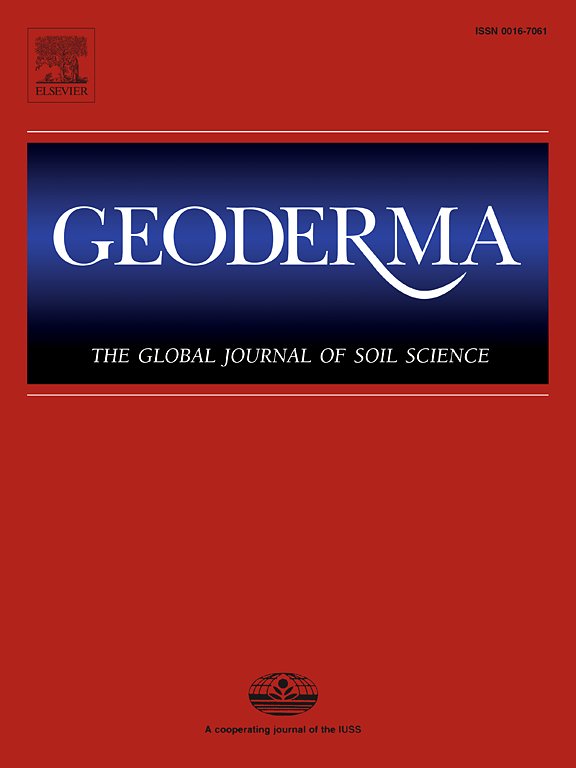Empirical estimation of saturated soil-paste electrical conductivity in the EU using pedotransfer functions and Quantile Regression Forests: A mapping approach based on LUCAS topsoil data
IF 5.6
1区 农林科学
Q1 SOIL SCIENCE
引用次数: 0
Abstract
Soil Electrical conductivity (EC) is a measure of the ability of soil to conduct an electric current, which is primarily influenced by the concentration of soluble salts in the soil solution that takes place principally through water-filled pores. Ions (Ca2+, Mg 2+, K +, Na +, and NH 4+, SO42-, Cl-, NO3–, and HCO3–) from soluble salts dissolved in soil water carry electrical charges and conduct the electrical current. EC is considered a proxy of soil salinity and other soil characteristics, whose monitoring is much needed in the context of climate change, increasing irrigation in agricultural areas and sea level rise. The pan-European LUCAS soil monitoring scheme, established in 2009, provided EC1:5 in the topsoil (0–20 cm) in the surveys of the years 2015 and 2018 for almost 20,000 samples. In this work, using the LUCAS 2018 dataset, we provide an empirically-derivedpedotransfer function to convert diluted EC1:5 to saturated ECe using the LUCAS soil texture and soil organic carbon, and a framework for ECe mapping with a machine-learning algorithm named Quantile Regression Forest. The final model resulted in an R2 of 0.302 with an RMSE of 0.265 dS m−1 for soil samples not used for model calibration. The results are presented as predicted ECe in the topsoil, and they reveal that in Atlantic and Northern Europe, salts may accumulate in soils through several natural processes, i.e., primary salinization, but in Mediterranean and Southern Europe, they accumulate because of human interventions on the soil water and solute regimes. Among these interventions, seawater intrusion into coastal aquifers, irrigation with waters containing soluble salts, poor drainage of irrigated lands and of naturally saline soils, stand out. Hotspot analysis per country or Nomenclature of Territorial Units for Statistics (NUTS 0) revealed high topsoil ECe levels occurred in Spain 0.11 %. Increasing ECe can led to constrained crop productivity in irrigated farming. With this assessment, we try to determine the hotspots for future monitoring and understanding the main drivers for sustainable soil management. Future challenges for ECe mapping that need to be address are sample numerosity and depth and availability of a consistent set of ECe data measured to provide a regression based PTF for the use of diluted EC1:5.
求助全文
约1分钟内获得全文
求助全文
来源期刊

Geoderma
农林科学-土壤科学
CiteScore
11.80
自引率
6.60%
发文量
597
审稿时长
58 days
期刊介绍:
Geoderma - the global journal of soil science - welcomes authors, readers and soil research from all parts of the world, encourages worldwide soil studies, and embraces all aspects of soil science and its associated pedagogy. The journal particularly welcomes interdisciplinary work focusing on dynamic soil processes and functions across space and time.
 求助内容:
求助内容: 应助结果提醒方式:
应助结果提醒方式:


